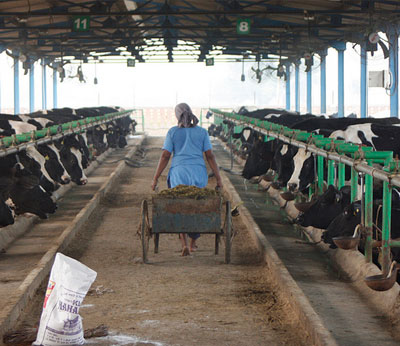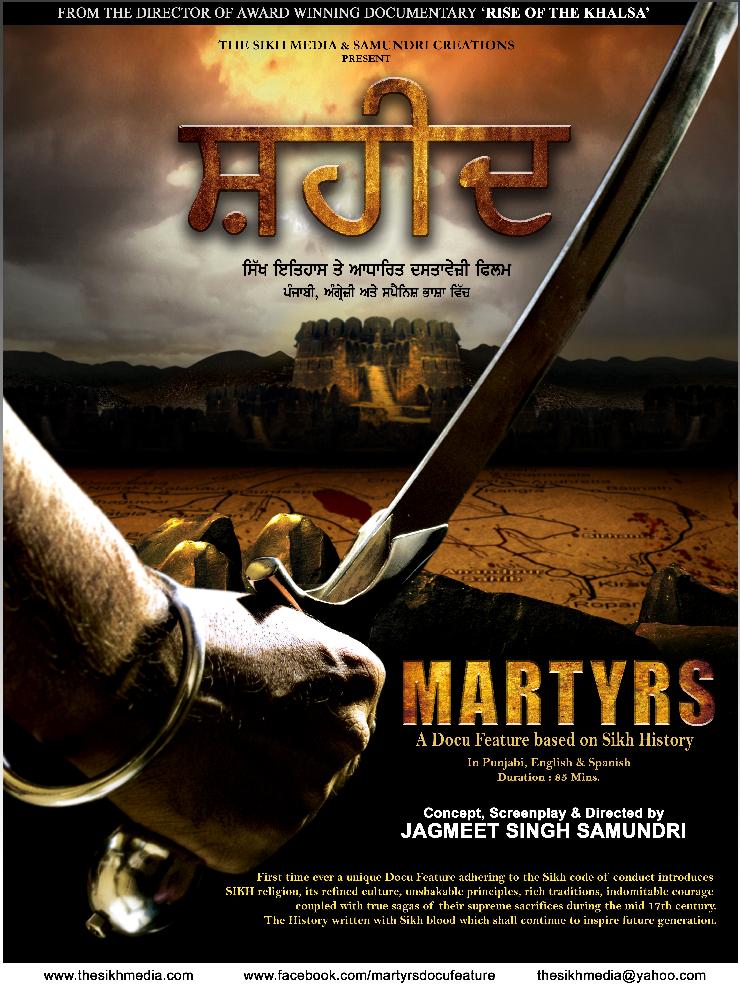Monday, April 30, 2012
Thursday, April 26, 2012
The Booming Economy of Punjab
 By Dr Srimal Fernando, Asia Correspondent
By Dr Srimal Fernando, Asia Correspondent
The Indian state of Punjab is one of the most vibrant and dynamic states in the whole of India. Situated in the northwest of the country Punjab is called the “Land of Five Rivers”. This unique piece of land covers an area of 50,362 square kilometers. The state's 27 million inhabitants (Estimates 2011) spread across twenty two districts are well known for its socio-economic achievements. Agriculture continues to be the bedrock of the Punjab economy and earned its reputation as the “Granary of India”. By South Asian standards, the economy of the state has a diverse and rich resource base. Poverty has been reduced over the past 30 years, and a social safety net put into place. There are a number of popular people and celebrities that have already made their presence felt in different streams and activities. Among them is the incumbent Indian Prime Minister Dr Manmohan Singh, one of the internationally acclaimed personalities from Punjab. Another personality is Shri Prakash Singh Badal who has been the Chief Minister of the state since 2007. His party, Shiromani Akali Dal (SAD), together with the Bharatiya Janata Party (BJP) have been, once again, elected to power by winning the 2012 assembly elections in the state. Shri Prakash Singh Badal has been the Chief Minister of Punjab for a record-breaking fifth time. The states major economic resources are its fertile land, the irrigation systems and its well-educated, technically sound population. These factors have contributed to achieve higher levels of productivity and a better competitiveness level in the global economy.

The economy of the state depends heavily on agriculture, industrial exports and tourism .The state is endowed with vast agricultural resources. Being an agricultural state the majority of its workers are engaged in farming and animal husbandry. The state produces most of India's grains than any other state in the country. Wheat, rice, sugarcane, cotton, fodder are the vital economic indicators of Punjab's agrarian society. The state has two crop seasons “Rabi”, the spring harvest season and the “Kharif” the autumn harvest season. The rice produced in the state is marketed and processed in different types of rice mills. There are about 2,200 grain hullers mostly in rural areas of the state. The Punjab sugarcane industry has undergone a major overhaul during the last five decades. The sugar production too has increased in recent years. Morinda Co-operative sugar mill is one of the largest sugar crushing mills in the state with a daily crushing capacity of 4,000 tones. Animal husbandry has been an essential part of Punjab’s economic life. The dairy industry of the state is part of a long and proud agricultural tradition of the state. Punjab is one of the largest milk producing areas of India with a capacity of 10 per cent of the country’s total production capability. Moga, is one of the largest milk processing plants in the state with a total production capacity of 435 thousand liters of milk.

Punjab is one of the most industrialized states in India. The state has a large manufacturing sector serving both the local and exports sectors. The large and small scale factories are scatted in all parts of the state. The majority of the industrial workers are engaged in small scale industries that make up 160,000 units (Estimates 2010). Large and medium business units are four hundred in number (Estimates 2010). The state's diverse industries range from Steel Rolling, scientific instruments, agricultural goods, electrical goods, bicycles, garments, machine tools, textiles, sewing machines to manufacturing of sports goods. Over the past few years the industrial sector employed over a million. The state has positioned itself as a key destination for operations of multinational companies in a variety of industries. In recent years, the state has successfully attracted many big-names and reputed global companies such as Nippon, Hitachi, Fujitsu, Nestle, Glaxo, Smithkline and Motorola. The state economy has witnessed rapid growth in the bicycles manufacturing industry. Today the state of Punjab is the largest bicycles manufacturer in India. Handicrafts and cottage industries of the state have been extremely popular. Punjab has more than 39,000 (Estimates 2010) small cottage industries providing widest avenues for the state’s labours.

Both modern and ancient culture is visible all over the state. Punjab’s natural and historical attractions appeal to many visitors from all parts of the world. Moreover, the fast growing tourism sector is another major pillar in the overall economic field of the state. According to the Punjab Heritage and Tourism Promotion Board (PHTPB) the state has been ranked the fourteenth tourism destination in India from twenty eighth position.The first planned city of India is the state’s capital; Chandigarh. It is a bustling affluent metropolis with glitzy shopping malls, boutiques and colorful markets which houses the intellectual elite as well as the seat of government. It serves as the capital of two states, Punjab and Haryana .The pilgrimage to the holiest of Sikh shrines, the Golden Temple of Amritsar is regarded as the holiest city of Sikhism. It attracts millions of Sikhs from all over the world. Punjab's educational system and technical training is considered to be the best in India. The state has achieved universal literacy of more than 71 percent. The state's high proportion of tertiary graduates and its performance as a modern technological society with thirteen universities promotes high quality of professional education. Currently the state is ranked seventh in terms of education amongst the states of India. The state has a large potential for hydroelectricity, thermal and renewable energy. The state is constructing several power plants with the vision of becoming a state with a power surplus by 2013. As one of the fastest growing economies in the country, the state of Punjab has a unique prospect to position itself on a path of continuing sustainable economic prosperity for its entire people.


Private school bans wearing turban in Shimla, Singh Sabha says
By Nagender Ranta
SHIMLA: The 18-year-old Sikh boy studying in a Christian private school in Shimla was banned wearing a turban in the school, said Guru Singh Sabha, Shimla, an apex body of the Sikhs in the capital of the state.
“A Sikh boy studying in plus 2 class in St. Edward’s School here in Shimla was denied wearing turban. The Guru Singh Sabha wrote a letter to the Principal in the Month of March when the school reopened but the school administration did not respond on this sensitive religious matter. Ultimately, we decided to go to the media as it hurts our religious sentiments. We would welcome if school administration allows wearing turban to the senior students. We want the issue to be resolved amicably,” Jaswinder Singh,President , Guru Singh Sabha Shimla, told Punjab Newsline.
The Guru Singh Sabha severely criticized this move of the private school calling it violation of the right to freedom of religion granted under the Indian Constitution.
We have given ultimatum to the principal of the school if this practice does not end and wearing turban was not allowed, we would begin a protest in front of the school and need be, can launch a protest movement across the state. The school is purposely hurting the sentiments of the Sikh community, he added.
“The Sikhs in Shimla feel hurt by this act of violation of the religious right of wearing turban, which is the religious identity of our community. We are a secular democratic country and such an act leads to spread of communalism in the society especially when an educational Institution practices such unconstitutional activity in its campus,” said President of the Guru Singh Sabha, Shimla. .
We have given ultimatum to the principal of the school if this practice does not end and wearing turban was not allowed, we would begin a protest in front of the school and need be, can launch a protest movement across the state. The school is purposely hurting the sentiments of the Sikh community, he added.
The school administration denies such allegations. The principal of the school said that we have no objection on wearing turban in the school and the matter has already been settled with the parents.
with thanks : PunjabNewsLine : LINK for detailed news.
Anand Karj Act
On behalf of Sikh Community,DSGMC President ParamjIt Singh Sarna along with other Sikh dignitaries visited Sonia Gandhi's house to convey thanks for Central Government's approval towards making a separate law to register marriages under the Anand Marriage Act.
Tuesday, April 24, 2012
Sikh leaders want Manmohan-led Congress Government at Center to quit
Amritsar, April 24 (ANI): There have been strong reactions in Sikh circles to the final conclusion of arguments in the Delhi Court that was hearing cases related to the 1984 anti-Sikh riots.
On Monday, the Central Bureau of Investigation (CBI) had concluded that Congress leader Sajjan Kumar had incited mobs to attacks Sikhs during the riots in New Delhi.
Sikh leaders have called on the
Manmohan-led UPA Government at the Centre to quit and take moral
responsibility for their leaders secret involvement in the anti-Sikh
riots.
Punjab Revenue and Public Relations Minister Bikram Singh Majithia said the Congress has no moral right to stay on in power at the Centre.
He said the Sikhs had all along maintained that the Congress leaders
had taken the law into their own hands in 1984, and added that the
Gandhi family was also responsible for the killing of hundreds of the
Sikhs.
Majithia said the Congress and
former prime minister Rajiv Gandhi acted hand in glove with the killers
of Sikhs, and added that Congress leaders and activists incited mobs to
act violently and in a retributive manner.
"Our stand had been vindicated
that the Congress was responsible for the killing and massacre of the
Sikhs in the national capital and other cities of the country in 1984'',
said Majithia.
BJP State Executive Member
Rajinder Mohan Singh said in a statement that what they had been saying
for the years has now come true.
"The CBI has finally admitted
that violence against the Sikhs had the backing of Congress leaders,''
he stated, adding it was Congress leaders like Sajjan Kumar who incited the mobs against the Sikhs.
The Shiromani Gurdwara Parbandhak Committee's executive member, Rajinder Singh Mehta, said anti-Sikh riot victims were yet to get justice 28 years after the violent event.
with thanks : Yahoo News : LINK for detailed news.
Monday, April 23, 2012
Sunday, April 22, 2012
Khalsa mero roop hai khaas
Khalsa mero roop hai khaas
More PowerPoint presentations from sikhs india
Plz click to view all the 17 pages.
www.sikhsindia.blogspot.in
Plz click to view all the 17 pages.
www.sikhsindia.blogspot.in
Subscribe to:
Posts (Atom)







